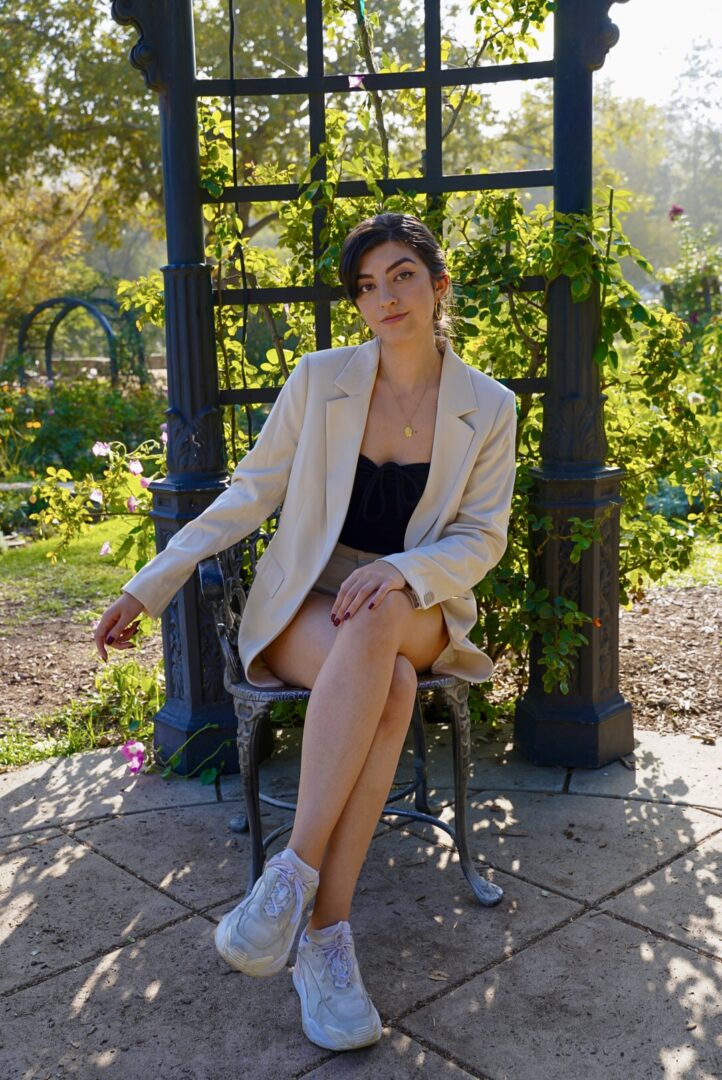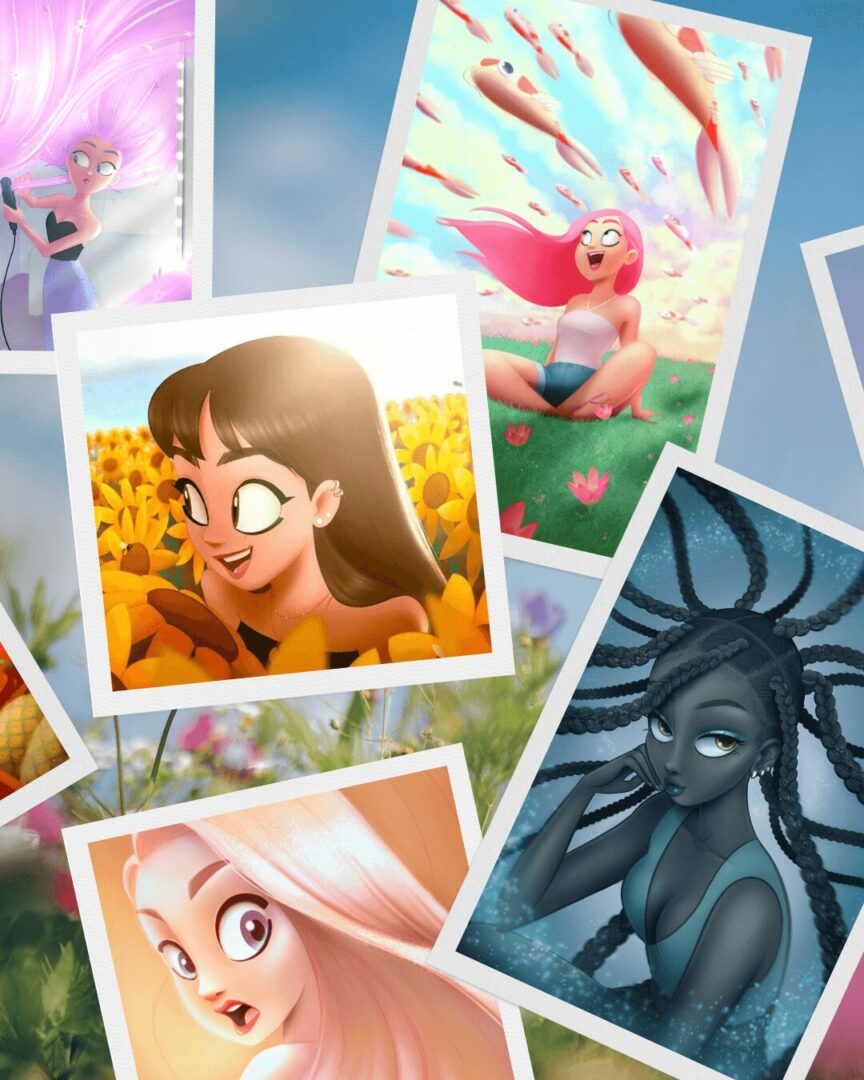We caught up with the brilliant and insightful Angie Nasca a few weeks ago and have shared our conversation below.
Angie, first a big thank you for taking the time to share your thoughts and insights with us today. I’m sure many of our readers will benefit from your wisdom, and one of the areas where we think your insight might be most helpful is related to imposter syndrome. Imposter syndrome is holding so many people back from reaching their true and highest potential and so we’d love to hear about your journey and how you overcame imposter syndrome.
Overcoming impostor syndrome hasn’t been easy, and to be honest, it’s something I still deal with from time to time. Having moved across the country and leaving school for this job, I often felt like I didn’t have enough experience to deserve my position. I couldn’t help but compare myself to my coworkers, which only made my impostor syndrome grow more and more. On top of that, the pressures of social media didn’t help much in taming those insecurities. Scrolling through Instagram and seeing so many talented artists thrive in their careers made me feel like I didn’t deserve the following I had built; I kept thinking they were way more skilled than I was.
After struggling with these feelings for a while, I started to shift my mindset by changing how I looked at feedback and my own skills. Instead of seeing critiques as proof that I wasn’t good enough, I began to see them as chances to grow and improve. I reminded myself that everyone has room to develop their craft, no matter how experienced they are. I also learned to appreciate my unique journey, recognizing my own style as an artist and realizing that moving across the country for this job took a lot of courage.
To tackle those negative thoughts, I focused more on my own progress instead of comparing myself to others. I made it a point to celebrate my small wins, which really helped me recognize my skills and growth over time. Being around supportive friends and colleagues made a huge difference too; their encouragement reminded me that I wasn’t alone in my struggles and that everyone has their own insecurities. With time, I learned to trust my abilities and value my perspective, which helped me feel more comfortable in my place in the industry.
While overcoming impostor syndrome has been quite the journey, I’ve made significant progress by focusing on my own growth and embracing my unique path. Even though self-doubt still pops up sometimes, I now recognize it for what it is and keep pushing forward, reminding myself that I deserve to be in this career.

Let’s take a small detour – maybe you can share a bit about yourself before we dive back into some of the other questions we had for you?
I have been working in the animation industry for almost nine years, with a focus on character design and illustration. I’m mostly known for my work on “Miraculous: Tales of Ladybug and Cat Noir”, as well as leading the character design for its spin-off series, “Miraculous Chibi”. In addition to my industry work, I’ve been sharing my personal art on Instagram for years, building a community of art lovers and professionals along the way.
Before my time in the industry began, I was simply posting artwork online for fun. With time, the community began to grow, and it’s now a place where I can not only share my work, but grow with the fellow artists that are part of the same community!
One of the aspects I value most is the opportunity to showcase not just the highlights of being an artist, but also normalize the challenges that come with it—struggles that often go unseen online. I’ve been very open about facing art block and impostor syndrome, and I believe in bringing these issues to light so that others know they aren’t alone when dealing with them. While sharing my work online is incredibly fulfilling, what means the most to me is helping others understand and empathize with the realities of these struggles.
The drawings I make during my free time range between more character design driven projects to more illustrative. I’ve always loved to draw aesthetic girls, and I usually draw them whenever I am in an art rut or just want to allow my creativity to flow without boundaries. Recently, I started working on an art series called “Magical Hair Girls”, which I feel is a fitting way for me to open up my mind to limitless creativity. This project has become my go-to creative outlet, allowing me to let loose after a long day of working on studio work, where it’s much more technical.
Alongside my character design and storytelling work, I’ve created a collection of original characters over the years. Storytelling has always been a passion of mine, ever since I was a kid, and one of my big dreams is to eventually create a graphic novel or a short film/series. Right now, I’m working on a project called “Cool Kids!”, which centers around two of my original characters who have become pretty well-known on my platform. I took a break from it for a while due to burnout, but I’m excited to finally be back at it. To keep myself motivated when I’m feeling stuck, I started a separate Instagram account for “Cool Kids!”, which really helps me stay inspired and keep pushing forward. Working on such a big project can be tough, especially with art block or impostor syndrome, but knowing that my community is interested and eager to see more keeps me going.

There is so much advice out there about all the different skills and qualities folks need to develop in order to succeed in today’s highly competitive environment and often it can feel overwhelming. So, if we had to break it down to just the three that matter most, which three skills or qualities would you focus on?
Having access to a community of artists, whether that’s online, through school or at work, is such a vital part of finding yourself as an artist. Before posting online, I didn’t really have a solid group of artists around to inspire me, so I’ll always be grateful for the online community I’ve become a part of. I’ve been able to make lots of friends with similar interests and hobbies, and being exposed to a wide range of art styles has helped me develop my own. Being part of a community with a strong support system can really keep you motivated in chasing your goals. As artists, we’re incredibly supportive of one another and genuinely love seeing everyone succeed!
In addition to this, watching online tutorials was a game changer for me when I was learning how to draw digitally. While art school offers valuable lessons, there are also plenty of free tutorials and speed drawings available online, which can be a great alternative if art school isn’t an option. I started drawing digitally at 15, and YouTube tutorials were a lifesaver for me. They introduced me to the world of digital art and helped me learn the basics of Photoshop. I don’t think I would’ve ever learned the skills I know today without the easy access to tutorials online!
The transition from hobbyist to industry professional is also a big leap, especially when you’re new to managing deadlines. It can be tiring and challenging, but working in the industry has been the best way for me to improve—not just artistically, but also in terms of time management. Being surrounded by talented coworkers was both inspiring and intimidating, especially as someone who struggles with impostor syndrome. It’s important for newcomers to recognize those feelings and face them head-on if you find yourself in a similar situation. Finding a balance between deadlines and accepting constructive criticism has been crucial to my growth, as I’ve learned to see feedback as a valuable tool to refine my skills rather than a negative.

What is the number one obstacle or challenge you are currently facing and what are you doing to try to resolve or overcome this challenge?
The biggest challenge I’m currently facing is finding a balance between staying productive and avoiding burnout. It’s easy to get caught up in a project and push through, especially if there are deadlines in place, but I’ve learned the hard way that this can lead to exhaustion. On top of that, spending long hours drawing can lead to physical problems like sciatica and carpal tunnel, which are physical symptoms I’ve began to experience more as I’ve gotten older. To overcome this issue, I’ve been trying to set clearer boundaries for myself, like scheduling regular breaks and prioritizing self-care, even if it means stepping away from my work temporarily. I’ve started setting alarms to remind myself to stand up regularly, and I also prioritize moving my body by taking walks and going to the gym whenever I can. It’s a work in progress, but I’m learning that taking care of my well-being ultimately helps me be more creative and focused in the long run.
Contact Info:
- Website: https://www.angienasca.com/
- Instagram: https://www.instagram.com/angiensca/?hl=en
- Linkedin: https://www.linkedin.com/in/angienasca
- Other: “Cool Kids!” Instagram: https://www.instagram.com/coolkidschronicles/

Image Credits
Micheli Nasca
so if you or someone you know deserves recognition please let us know here.




